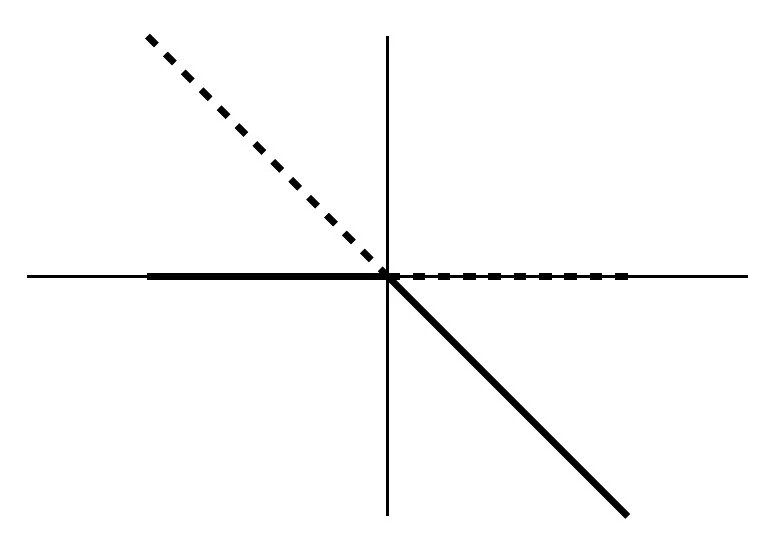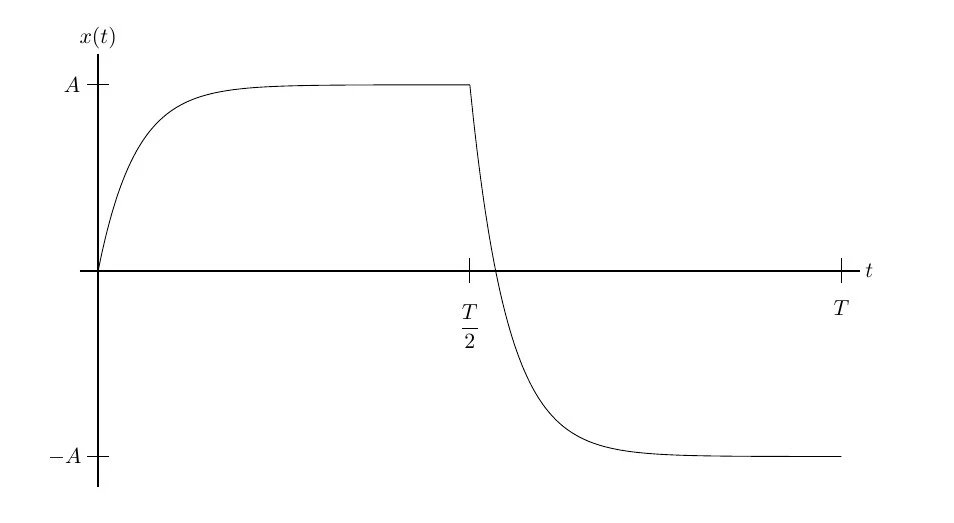Errata for "Nonlinear Dynamics and Chaos, Third Edition" by Steven. H. Strogatz

p. 119
"Equation (3)" should be "This equation" in the first line.
p. 119
"vector fields for (5)" should be "vector fields for (4)" above Figure 4.5.1.
p. 120
"fixed point of (3)" should be "fixed point of (4)" below Equation (5).
p. 120
"(6) and (7)" should be "(5) and (6)" below Equation (6).
p. 223
"Theorem 7.2.3" should be "Theorem 7.2.1" in the box.
p. 364
$k = 1$ should be $k = 0$ in the Pi product.
p. 374
In the third equation of the system (2), insert $v$ before the subscript $r$.
p. 394
In the first line under Example 10.3.1, remove the star in $x^{*}_{n+1}$.
p. 512
Figure 13.4.5 is an exaggeration of the actual $\rho(\theta,\omega)$ function, which has also been wrapped around the unit circle.
$\displaystyle \rho(\theta,\omega) = \frac{1}{2\pi}\frac{\sqrt{\omega^{2} - (Kr)^{2}}}{\big|\omega - Kr \sin(\theta)\big|}$
The below plot has the unit circle with an accurate plot of $\displaystyle 1 + \rho(\theta,\omega)$ for $\omega = 2$ and $Kr = 0.5$ plotted as a polar plot.

p. 515
Replace (3) with (4) in the phrase "Equation (3) may look intimidating".
p. 550
In 13.6.1, insert $a_{ij}$ between the summation and square bracket.
p. 597
In the entry for "superstable fixed point", insert 387 to the left of 415-417.
Errata for "Nonlinear Dynamics and Chaos, Second Edition" by Steven. H. Strogatz

p. 42, 2.5.6 c)
Combining (a) and (b) ...
p. 43, 2.8.3 c)
$\ln(E)$ vs. $\ln(t)$ should be $\ln(E)$ vs. $\ln(\Delta t)$.
p. 44, 2.8.6 d)
Should say: Repeat part (c) ...
p. 51
Just below equation (3): $a = \dfrac{\partial f}{\partial r}\Bigg|_{( x^{*}, r_{c})}$ (partial with respect to $r$, not $x$).
p. 80 and 81, 3.1.5
The cases for $a = \dfrac{\partial f}{\partial r}\Bigg|_{( x^{*}, r_{c})} = 0$ and $a = \dfrac{\partial f}{\partial r}\Bigg|_{( x^{*}, r_{c})} \neq 0$ are backwards.
p. 82, 3.3.2
Parameter $l$ should be $\lambda$ in the paragraph.
p. 87, 3.6.5 f)
...reduces to the approximate result in part (e).
p. 117, 4.4.2
In line 2, change $\theta'$ to $\dot{\theta}$.
p. 129
In the caption for Fig 5.1.5 (c): replace the equals sign with a minus sign, so that the caption reads:
(c) $-1 < a < 0$
p. 130
Start of fifth paragraph: replace $\alpha$ with $a$ in the sentence: Finally when $a$ ...
p. 183, 6.3.9 c)
Rennie Mirollo had a student who pointed out that part (c) is wrong. Many trajectories approach lines of the form $y = x + c$. Trajectories with large initial condition $x_0$, $y_0$ blow up to infinity in a finite time. Their value of $y-x$ at the blow-up time determines the value of $c$.
p. 184, 6.4.4
First equation should have $b_{1}$, not $b$.
p. 185, 6.4.7
The rate equations show capital $K$'s, but in the next sentence, when discussing the parameters, lower case $k$'s are given. Use lower case $k$'s in the rate equations.
p. 188, 6.5.6
Use the straight "ell" in the displayed equation to replace the curly "ell" in the following line: "where $k$,$\ell$ ..."
p. 203
V shouldn't be bold-faced in line 10: ...function ${\bf V}({\bf x})$ becomes ...function $V({\bf x})$
p. 216
The equation in the last paragraph, $T \approx \mu[3-2\ln2]+2\alpha\mu^{-1/3}+... $, should be $T \approx \mu[3-2\ln2]+3\alpha\mu^{-1/3}+...$
p. 232, 7.2.9 c)
The dots are missing over $x$ and $y$ on the LHS of $\dot{x} = -2xe^{x^{2}+y^{2}}$ and $\dot{y} = -2ye^{x^{2}+y^{2}}$
p. 240, 7.6.16
${\bf v}$ should be bold in integral on the left side of the equation.
p. 242, 7.6.22, Line 3
Insert minus sign before $\dfrac{1}{2}$. Equation should read $x \approx -\dfrac{1}{2}\epsilon a^{2}$.
p. 242, 7.6.25 c)
Replace final $\sin(t+\theta)$ with $\sin(t+\phi)$.
p. 243, 7.6.26, Line 2
There should be one dot over $x$, not two dots, in the equation. It should read $\dot{x} = -\epsilon x \sin^2 t$.
p. 264, Fig 8.4.1
Fill in the open dot at $r = 0$ in top left and top middle panel; should be filled black dot.
p. 267
"The generic scaling laws for bifurcation of cycles in two-dimensional systems are given in Table 7.4.1." -- should be Table 8.4.1, not 7.4.1.
p. 291
Displayed equation for $n_B$ in Exercise 8.1.15: the final term should be $n_B$, not $n_{AB}$.
p. 302, 8.6.6
In part (a), end. Write $\dot{\phi} = \omega$ instead of $\dot{\theta} = \omega$.
p. 318
The number for (13) is missing, should be displayed to the right of the equation.
p. 344, Fig. 9.6.3
Insert labels (a) and (b) on figure.
p. 349, 9.1.4
Capitalize $p$ in $\dot{P} = \gamma_{1}(ED-p)$ to $\dot{P} = \gamma_{1}(ED-P)$.
p. 368
Change $+r^2$ to $-r^2$ in the absolute value, in the line after the array of four displayed equations.
p. 370
Saha and Strogatz (1994) - year should be 1995.
p. 380, Line 6
$\Delta_n = r_n - r_{n-1}$ (the final subscript is $n-1$, not $n+1$).
p. 393, Eqn. 10
Insert $+$ between $-2$ and square root.
p. 396, 10.2.4
Change $-r$ to $r$ in the map $x_{n+1} = x_n e^{-r(1-x_n)}$.
p. 403, 10.7.8, Line 2
Delete subscript $n$ in the phrase "where $f(x_n, r)$ ..."
p. 434, 12.1.3
The limit in calculating $d$ should be $n\rightarrow \infty$ instead of $n\rightarrow 0$.
p. 451, Last sentence
"Figure 12.5.6 shows the Poincaré section for the system of Example 12.5.1." should be "Example 12.5.2."
p. 455, 12.1.7
No shaded regions. Delete "shaded".
p. 463, 6.3.6
Stable degenerate node
p. 465, 7.6.17, Line 2
The superscript after $\Big(\gamma + \dfrac{1}{2} \cos 2\phi\Big)$ should be $-\dfrac{1}{2}$, not $-1$.
p. 465, 7.6.22
The $+$ after $a \cos \omega t$ should be $-$.
p. 466, 8.5.4
This should be numbered 8.5.5.
p. 468, second 11.2.4
The third line from bottom should be numbered 11.2.5.
p. 468, 11.3.4
Remove boldface on the first letter in $\ln 5$.
p. 474
Harrison Biswas page number should be 394.
p. 484
Kocak (1989) isn't explicitly referenced on page 34, but is relevant to the Practical Matters section.
p. 507
In the index: under entry
saddle-node bifurcation,
ofcycles,
insert space between "of" and "cycles".



